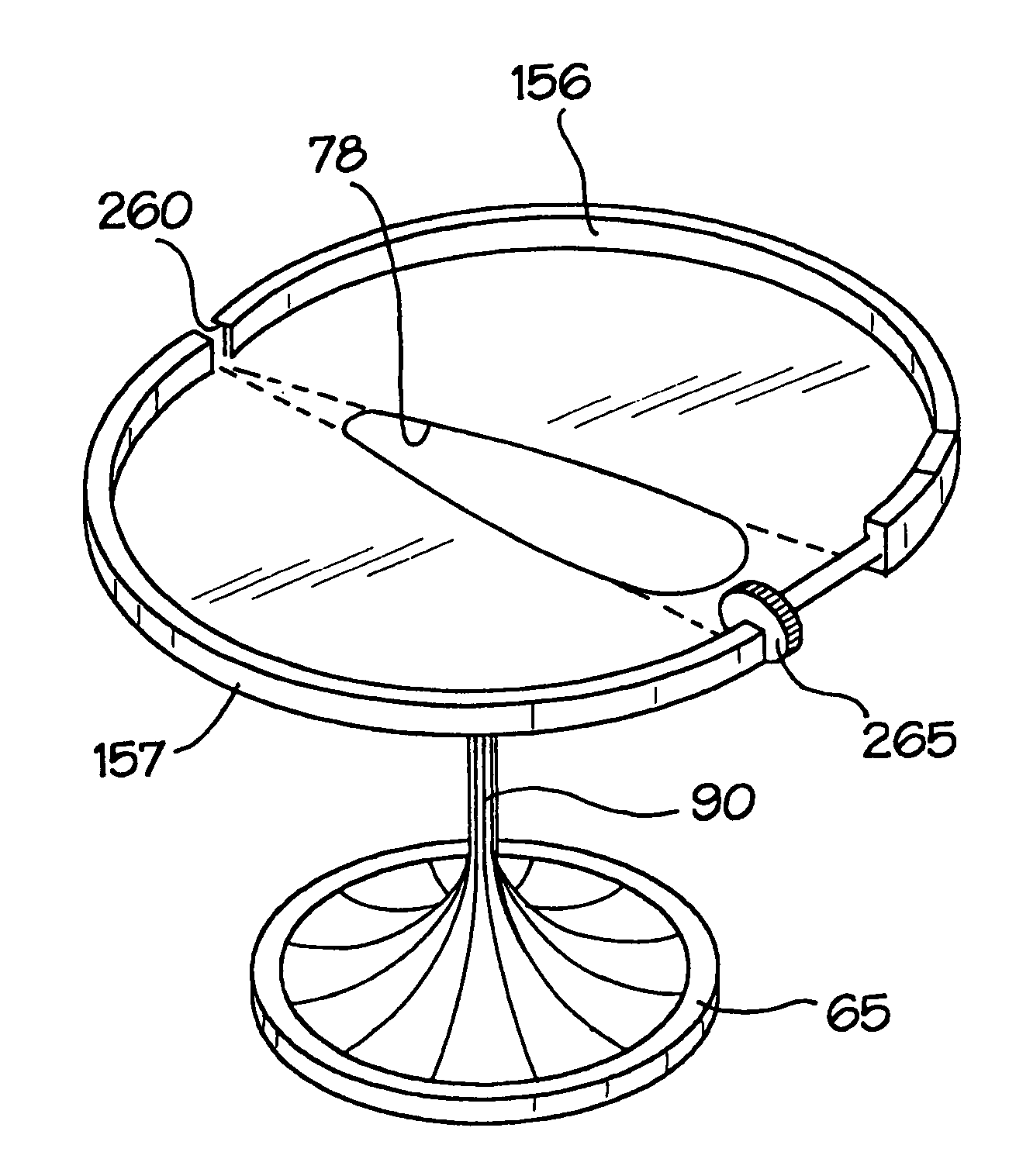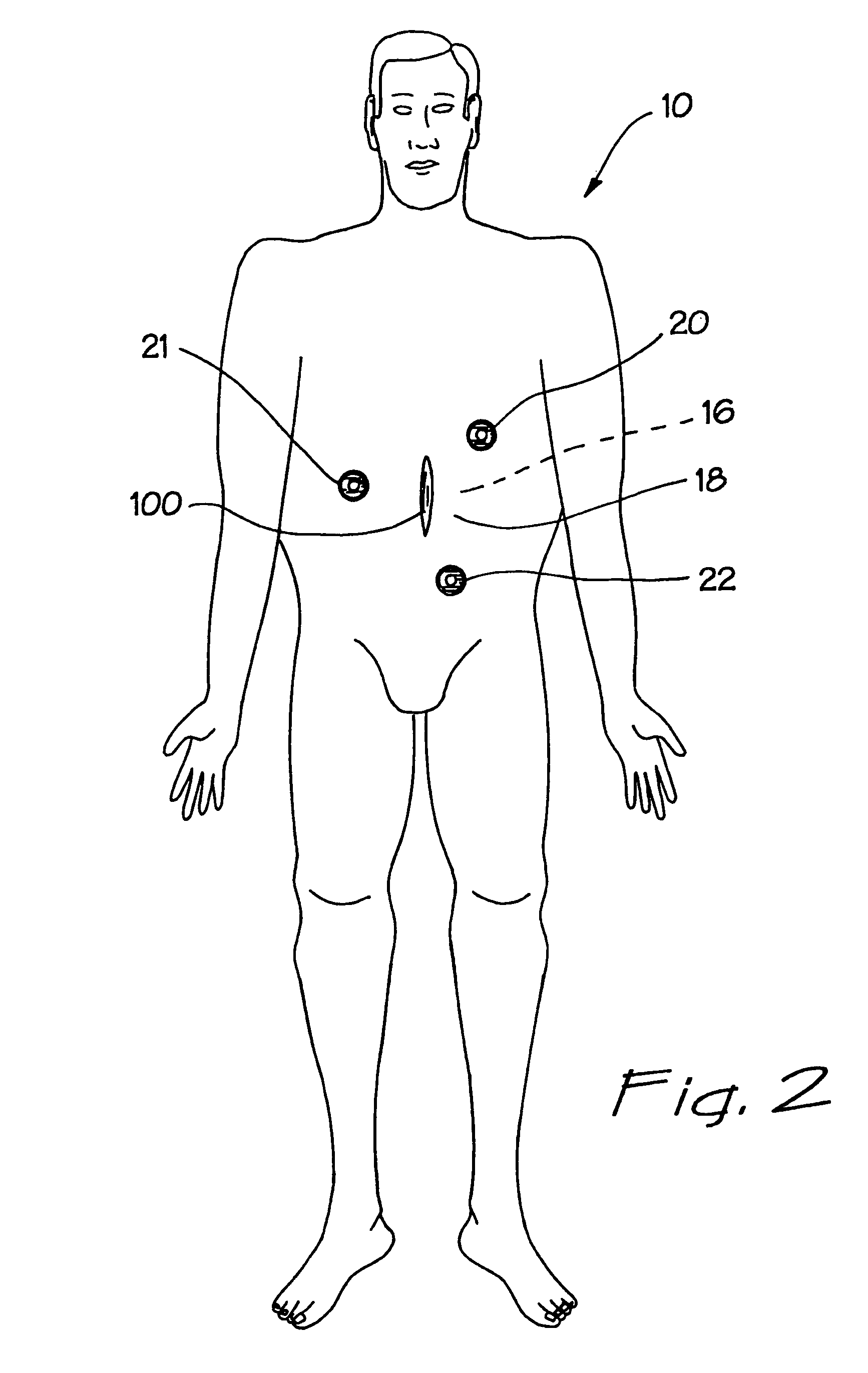Sealed surgical access device
a surgical access and sealing technology, applied in the field of surgical access devices, can solve the problems of two modalities obviating each other, difficult or risky laparoscopy, and complex devices, and require several steps to pla
- Summary
- Abstract
- Description
- Claims
- Application Information
AI Technical Summary
Benefits of technology
Problems solved by technology
Method used
Image
Examples
Embodiment Construction
[0061]In FIG. 1, a patient is illustrated in a prone or supine position and designated by the reference numeral 10. The patient 10 has an abdomen 12 which includes a body or abdominal cavity 16 defined by an abdominal wall 18. A plurality of trocars 20, 21, and 22 are placed so as to provide surgical access to the abdominal cavity 16. Various instruments 23, 24, 25 are illustrated for use through the trocars 20, 21, and 22.
[0062]In FIG. 2, a “hand-assisted” laparoscopic procedure is shown. The patient 10 is supine and the abdominal cavity 16 is insufflated. In addition to the trocars 20, 21, and 22, there is an additional surgical access device 50 that has been placed relative to a surgical incision 100. This access device 50 is adapted to receive a hand 160 of a surgeon, as it is placed through the access device 50 and into the abdominal cavity 16 of the patient 10. The surgeon is able to use the inserted hand 160 to perform tasks that are too difficult or not safe for the instrume...
PUM
 Login to View More
Login to View More Abstract
Description
Claims
Application Information
 Login to View More
Login to View More - R&D
- Intellectual Property
- Life Sciences
- Materials
- Tech Scout
- Unparalleled Data Quality
- Higher Quality Content
- 60% Fewer Hallucinations
Browse by: Latest US Patents, China's latest patents, Technical Efficacy Thesaurus, Application Domain, Technology Topic, Popular Technical Reports.
© 2025 PatSnap. All rights reserved.Legal|Privacy policy|Modern Slavery Act Transparency Statement|Sitemap|About US| Contact US: help@patsnap.com



